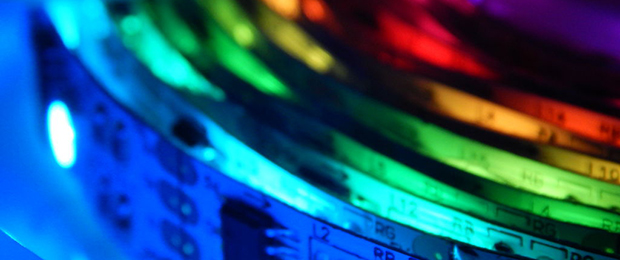With the Raspberry Pi now most famously known as a $30 media PC, it only makes sense that the best uses for the GPIO pins on the Pi are used for an Ambilight. [Great Scott Labs] put up a great video on using the Pi as a uniquely configurable Ambilight with Hyperion and just about any video input imaginable.
This isn’t the first Ambilight clone [Great Scott] has put together, but for the first version the Ambilight functioned only under Raspbian and not any random HDMI input. The new version solves this by using an HDMI splitter box, feeding into an HDMI to composite converter, and finally into a USB composite capture dongle attached to the Raspi.
With the software in the instructions, the Raspi effectively mirrors the video coming from the video capture dongle. The Pi is running Hyperion to control a strip of WS2801 RGB LEDs, making the back of any TV glowey and blinkey.
Since [Great Scott] is using a component video signal as an input, the adapters necessary to have any device work with this Ambilight are readily available. We’d honestly like to see this build working with the old Commodore disk access screen border going nuts, so be sure to send that in if you ever get that working.
















[…] functioned only under Raspbian […] *Raspbmc
java is shit
nothing really new
and also the image isnt the best solution because hyperion features a built in grabber which is way better than mplayer. (see github issue 12).
Only compatible with PC, a setup with 1 arduino and a 50 leds, is about 40€. Here, compatible with everything in HDMI, is about 100€.
This sound fair to me.
This guys is awesome, i didn’t even imagine a second that is was possible.
yeah, really liked the video!
In the video the delay between the tv and the ambilight seems quite significant. I wonder how acceptable it is in real life.
this is cool and not cool. because leds suck for ambilight due to the lack of a good CRI
You can get high CRI LEDs, but they’re expensive.
If he’s using component video, it should be possible to do this without the Raspi…an STM nucleo with a M4 cortex should be fast enough to process the color signal at the edges of the picture…
I bet you could do that with discrete logic. I wish I had the time to do it, but component video is kind of dead anyways.
Sadly, my Wii still uses component. Then again, I’ve never seen someone use an ambilight for older gaming.
it’ll be better if the software hyperion could run on windows without RPi
I always wondered if something like this would work with HDCP content but since he is using a PS3, I guess the answer is yes.
I was just looking for the source of this project for more information on the capture splitting process, just in case someone else was as well:
https://www.youtube.com/watch?v=8cpQpGYtjR0
https://github.com/gkaindl/ambi-tv
Also covered previously on HaD as well:
http://hackaday.com/2013/08/05/no-computer-ambilight-clone-uses-a-computer/
converts it to composite video? Real hackers make there own HDMI input boards for their favourite FPGA dev board and do it all digital right the way to the LED: http://hacks.esar.org.uk/hdmi-light/
I have a question. If I have this:
http://www.amazon.com/gp/aw/d/B004ZH62PQ?pc_redir=1400585482&robot_redir=1
Can I use my old composite signals and achieve the same effect? Looking at this implementation it just converts the HDMI to composite for the pi to process. I’m thinking immersive NES lol.
See also this: LIGHTBERRY.EU
What is the rca to hdmi converter your using?
Has anyone figured out a better power supply option…or a simpler one? I have this whole set up and I have (1) for the Pi (1) for the HDMI splitter and (1) for the led strip. has anyone seen someone do it with a single power supply?